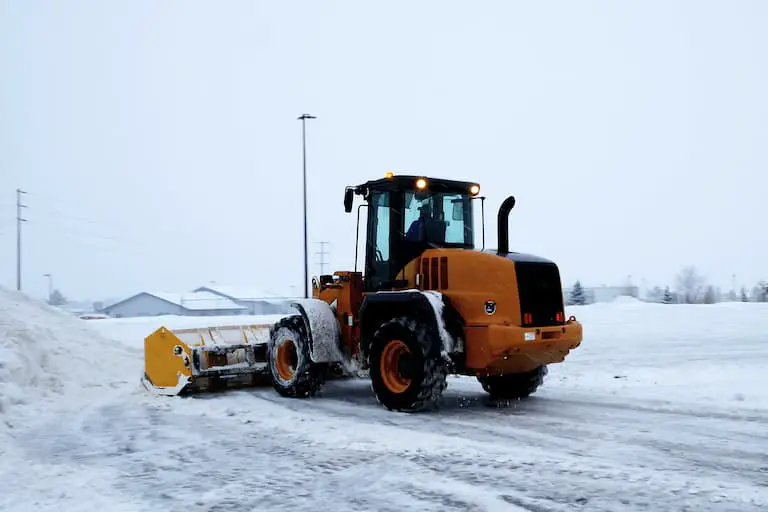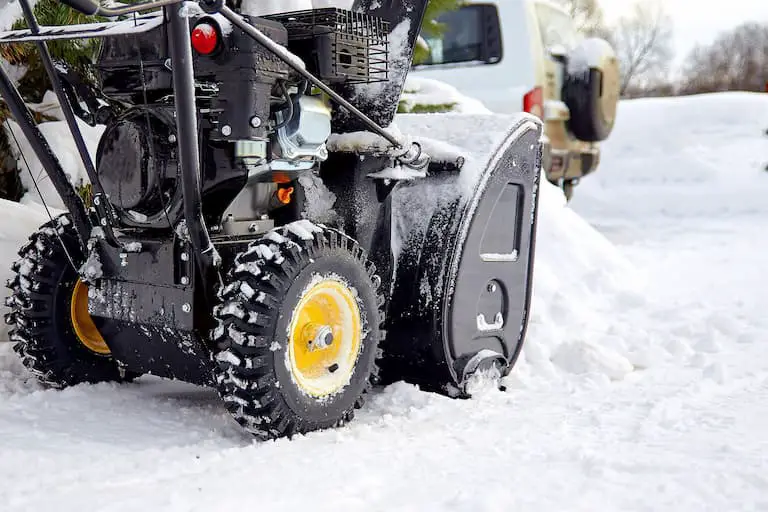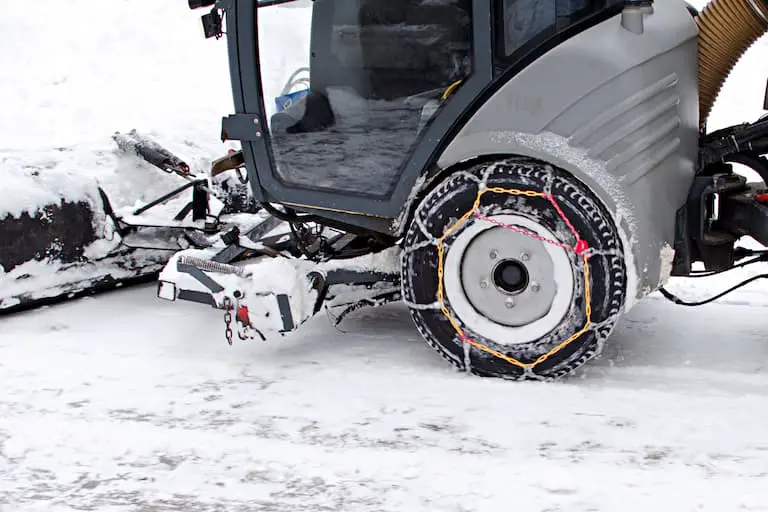As an Amazon Associate, we earn from qualifying purchases. We may also earn commissions if you purchase products from other retailers after clicking on a link from our site.
When the snow starts piling up on your driveway or sidewalk, you can use a snowblower to remove it. Unlike shoveling, using a snowblower is time-efficient and will save you from back pains. But have you ever wondered whether snowblower tires have tubes in them?
Some snowblower tires have tubes in them, but most snowblower tires on the market today are tubeless. You can distinguish the two types of snowblower tires by checking their valve systems.
A snow blower is a powered device that removes snow from the ground and discharges it to one side. The rest of this article will discuss a few topics related to snowblower tires. So, read on to learn more!

Are Snowblower Tires Tubeless?
If you’ve never owned a snowblower, you might wonder whether the tires have tubes or not. For years, we’ve been accustomed to vehicles or powered machines whose tires have tubes. But, following technological advancements, we now have machines that utilize tubeless tires. So, are all snowblowers in this category?
Not all snowblower tires are tubeless since some have inner tubes. The two types are small-engine tires in the same category as lawnmowers, UTVs, and utility carts. They also have varying sizes depending on the size of the snowblower.
When shopping for a snowblower, you might not think much about the type of tires it has, so it’s essential to know since you’ll be re-inflating them occasionally. But, how do you tell whether a snowblower tire is tubeless or not?
The simplest way to know is by asking the dealer when purchasing the snowblower.
However, if you order the machine online, you can also go through the manufacturer’s manual to find out. Alternatively, you can tell what type the tire is by checking if the tire bead and rim are sealed together.
What’s the difference between tubeless tires and those that have inner tubes?

Tubeless Tires
Although they haven’t been around for a long time, tubeless tires have currently flooded the market. These are tires that have a sealed rim and tire bead. A valve sits directly on the rim, and it’s where you inject a sealant to ensure an air seal between the rim and the tire.
Tubeless tires are now sought-after since they can run at lower pressures and have a higher resistance than tube tires. However, you’ll have to spend more when buying and maintaining them. In addition, re-inflating tubeless tires can be complicated, especially when the tire doesn’t sit properly on the rim.
Tubed Tires
Tubed tires are what most of us are familiar with, but unlike tubeless tires, the rim and tire are not sealed together. And they have soft inner tubes to hold pressurized air and a valve where you inflate the tire.
Many snowblower owners still use the tubed tires because they’re cheaper. Additionally, it’s easy to re-inflate or replace them.
However, they’re more likely to have punctures and flat tires than tubeless ones.
How Do You Determine the Size of a Snowblower Tire?
You can determine the size of a snowblower tire by checking its sidewall. But, you may not always find these dimensions due to various reasons. In such a case, it’s advisable to measure the wheel.
Snowblower tires are available in a wide array of sizes.
For tubed tires, the size of the inner tubes depends on the tire’s size. So, when purchasing a new snowblower, you’ll find that manufacturers always indicate the tire’s size on the sidewall.
It’s crucial to know the size of your snowblower tires since you may have to replace them when worn out. Determining the tire’s size can be daunting if you’re buying a used snowblower whose sidewall is compromised and you can’t find the size number. You’ll have to measure the tire’s size manually in such cases.

Here’s how to measure the size of a snowblower tire:
- Using a tape measure, determine the tire’s height from the bottom to the top thread.
- Place the tape measure across the top thread to measure the tire’s width.
- Then place the tape measure on the tire’s rim, and measure its size.
- Arrange the tire’s dimensions starting with the height, followed by the width, and then the rim’s size. For instance, you can have a snowblower tire with a height of 14” (35.56 cm), a 6” (15.24 cm) width, and a 5” (12.7 cm) rim size. You’’’ then write these measurements as 14” X 6” X 5” (35.56 x 15.24 x 12.7 cm). You can also write these dimensions in centimeters or millimeters.
How To Change a Snowblower Tube
Snowblower tire tubes are susceptible to wear and tear, or punctures. If the tube is irreparable, the best option is to get rid of the old one and replace it with a new tube. The process is not complicated, and you don’t have to seek a professional to do it unless you just prefer that option.
- Tilt your snowblower on its side or auger blades and remove the affected tire using a jack.
- Remove the stem nut that holds the tube on the rim.
- Loosen the tire from the rim by spraying some oil and then sliding a tire bar between the tire’s edge and the rim. Move another bar around the rim’s circumference to pry the tire and pull out one side of the tire.
- Remove the old tube from the tire and replace it with the new one. Fit the tube’s stem by passing it through the hole on the rim and close it by tightening its nut on the rim’s exterior.
- Place back the tire over the rim using the tire bars and line up its edges along the rim’s edges.
- Inflate the tire by attaching its air compressor nozzle to the tube stem. The tire and rim should be well aligned for the tire to hold air.
- Spray some water on the rim, tire seal, and stem to check out any leaks. If there are no leaks, mount the tire onto the snowblower.
Conclusion
If you live in a region that’s prone to regular or heavy snowfall during winter, you can consider purchasing a snowblower. Various snowblower types are available, and they either have tubed or tubeless tires. That’s why it’s essential to know their features before settling on the ideal snowblower.
